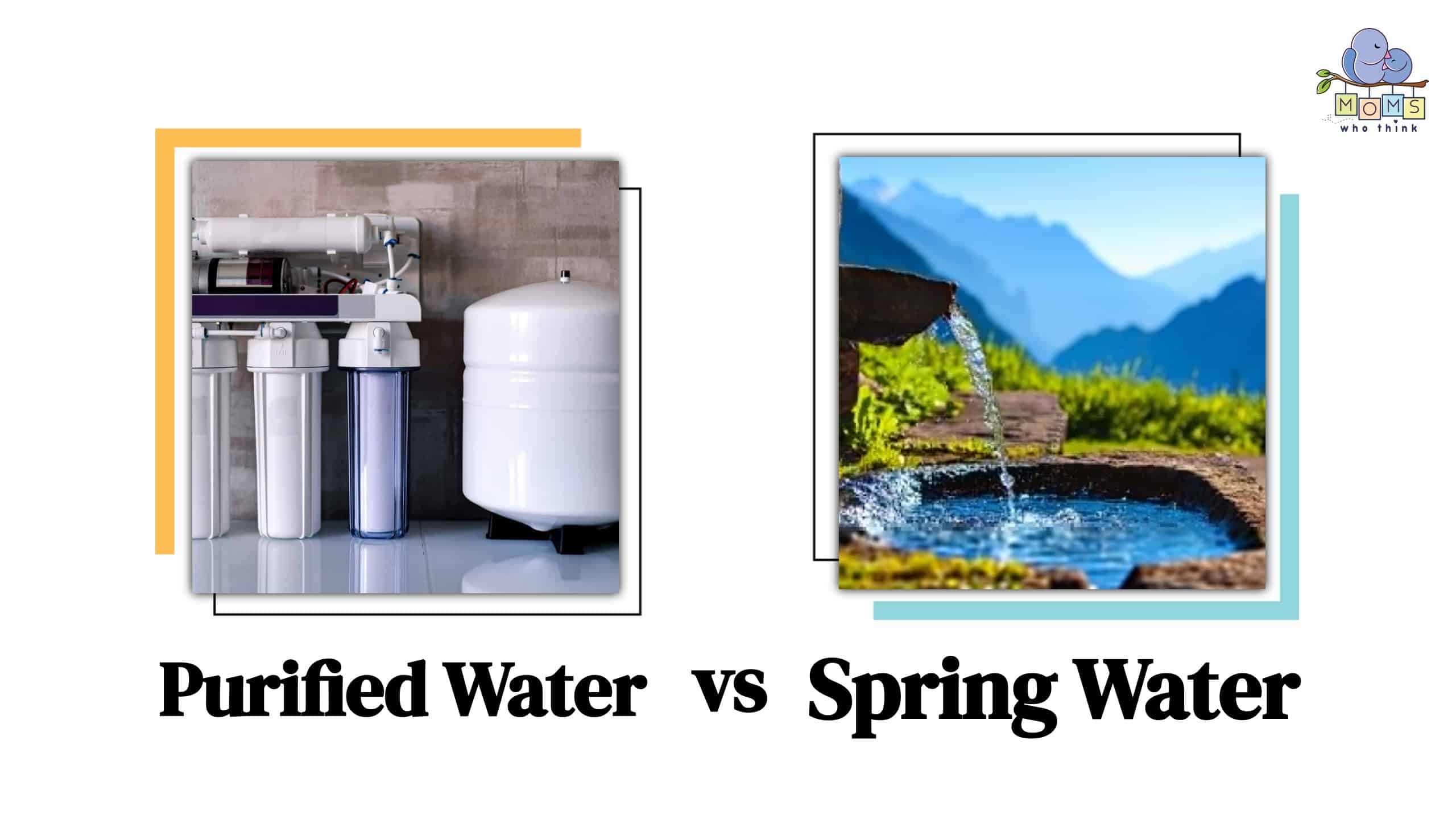Our body needs water to flush out waste, transport nutrients, regulate our body temperature, and more. The human body is made up of about 60% water, and we can only survive three to five days without fluids. Two common options for drinking water are purified water and spring water. However, both are safe to drink, although their sources, purifying methods, and quality are different. Purified water goes through a process where viruses and impurities are removed. Spring water, on the other hand, comes from a natural underground source. In this article, we will discuss purified vs. spring water: 4 differences & pros and cons.
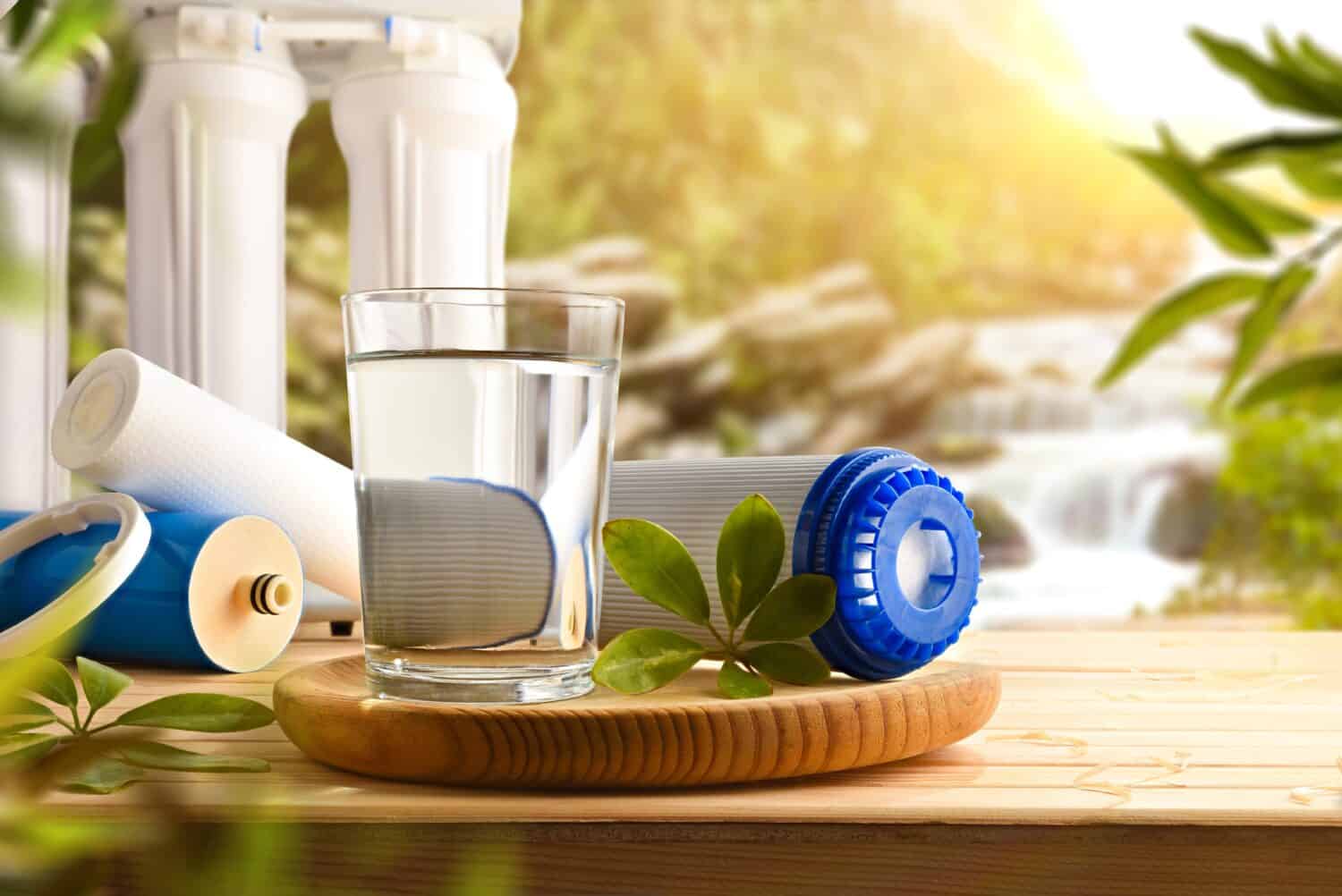
By drinking purified water, you can promote healthy-looking skin.
©Davizro Photography/Shutterstock.com
Purified vs. Spring Water: 4 Differences
- Purified water is sourced from lakes, rivers, or municipal suppliers. It goes through a severe filtration process to remove most impurities. Spring water, on the other hand, comes from natural springs found underground that develop out of the aquifer and then rise to the top of the Earth’s crust, where it becomes surface water. Springs are an important source of water in dry areas that have little rain for both humans and animals. To preserve its natural mineral content, spring water does not require as much treatment when compared to purified water.
- To purify tap water, it must go through a filtration system, to clean it from viruses and unwanted toxins. Companies that purify water consider the amount of (TDS) total dissolved solids in the water to judge its quality. This refers to the amount of inorganic and organic resources, such as ions, metals, salts, and minerals, that have liquified in the water.
Water can be purified through the following methods:
- Reverse osmosis: When applying pressure and forcing it through a semipermeable membrane, this separates minerals and dissolved salts, as well as any other chemicals, from the water. Furthermore, this process removes most minerals, including potassium, calcium, magnesium, and sodium.
- Ozonation: This is a method where the water is exposed to pure oxygen gas under pressure, creating ozone-rich bubbles between the two, killing all parasites and any other toxins in the water.
- UV: Under ultraviolet light, this method allows you to see the nodules, viruses, and bacteria. The light then attacks the genetic code of microorganisms in the water as it passes through the treatment system, preventing them from reproducing as it changes their DNA. On the other hand, spring water is filtered to remove unwanted particles and doesn’t need to go through large filtration treatments to maintain its natural taste and composition.
- Purified water often has a low mineral content as the purification process removes beneficial minerals like potassium, calcium, and magnesium. Yet spring water would be more healthy as these minerals are still in place because the water has traveled through the Earth's layers.
- Purified water tastes different due to the minerals being extracted through the purification process, but spring water has a crisp, refreshing taste because you can still taste the minerals.
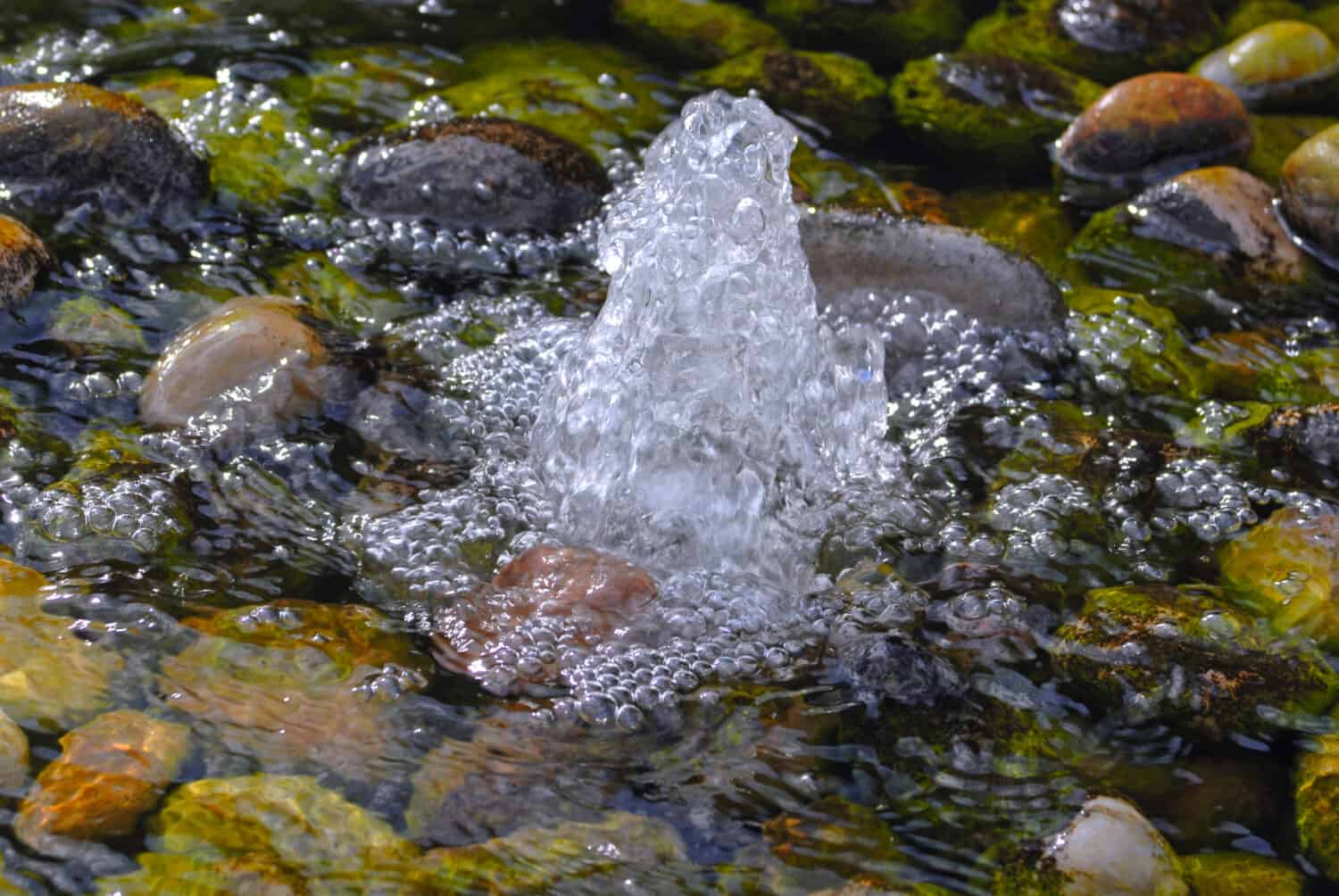
Spring water has a crisp, refreshing taste.
©severija/Shutterstock.com
Purified Water vs. Spring Water: Pros and Cons
While both types of water are healthy for you to drink, there are pros and cons between the two. Let’s take a closer look.
- Purified water pros: It is free of impurities, widely available, reduces waterborne diseases, has a natural taste, and is affordable. You can also purchase a purified water dispenser to place in your home or office. We recommend this one:
- Made without BPA
- Hold 10 cups of water
- Get great-tasting water without the waste
- Purified water cons: It lacks natural minerals that could improve your overall health; it doesn’t have a taste; it may lack freshness; and the cost varies.
- Spring water pros: Has a natural, refreshing taste due to its natural mineral content. It comes from the natural source of the Earth's outer layers. It is less harmful to the environment. It isn't that expensive.
- Spring water cons: The taste can vary depending on the spring it was sourced from. It is mostly packed in plastic bottles, which can have an impact on pollution. The prices vary by region.
Fun DIY Water Purifier
Here is a fun project you can make at home with the kids. Note that you will need to boil the water afterward if you plan to drink it. You will need:
- Gravel
- Plastic bottle with a cap
- Hammer and nail
- Large cup
- Sand
- Mug to catch the water
- Coffee filter
- Craft knife
- Activated charcoal
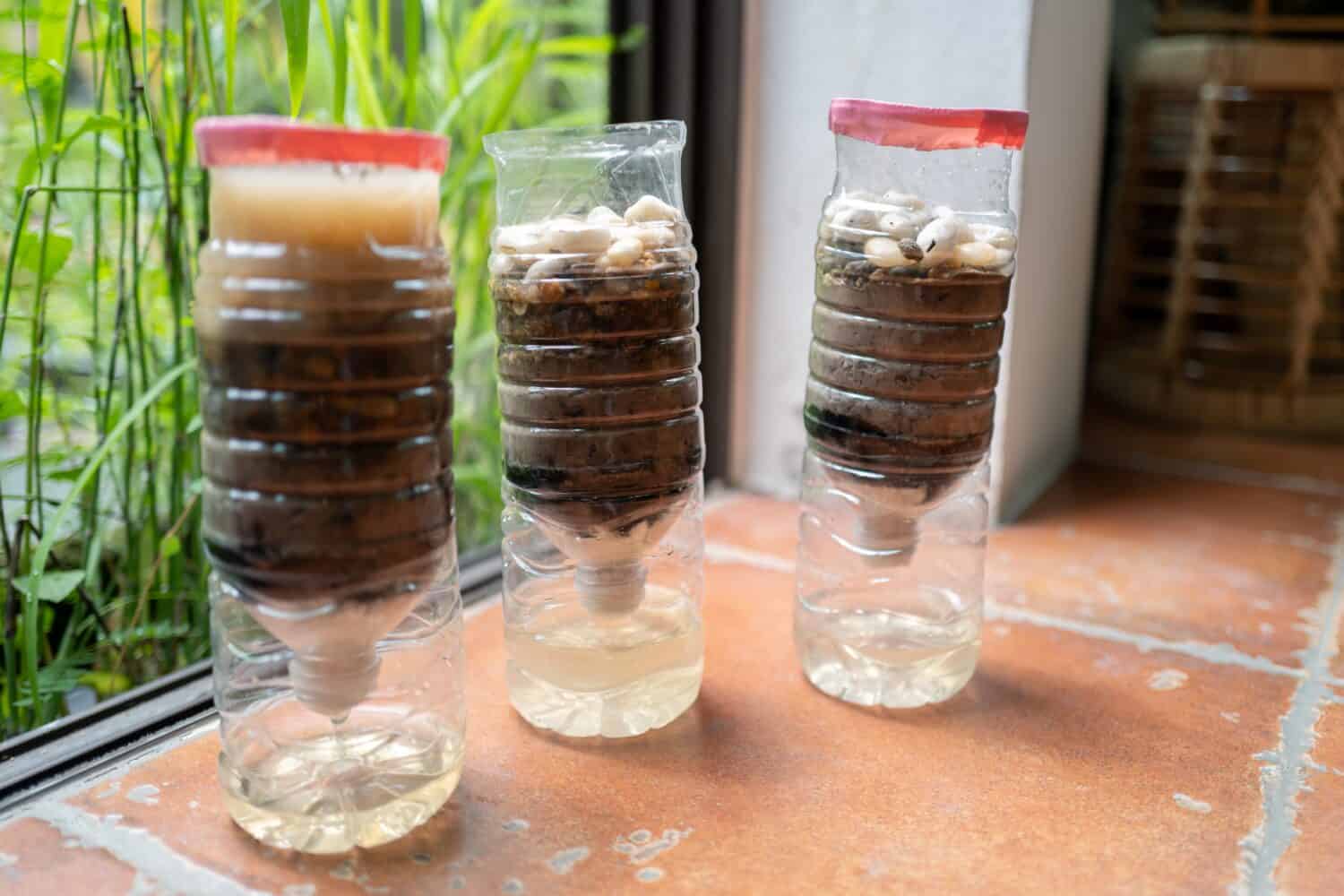
The DIY water project is a fun activity you can do with the kids.
©Iron Casper/Shutterstock.com
First, cut the bottom of the bottle off using the craft knife. Second, punch a hole through the cap using the nail and hammer. Next, place the coffee filter over the bottle’s mouth and close the cap. Then place the bottle upside down in the cup and fill it about a third of the way with activated charcoal. After that, fill the middle with sand. Top up the rest of the bottle with gravel, leaving a little bit of space at the top. Next, place the filter in the mug to catch the water and pour the water through the filter. Wait for the water to pass through. If the water is not clear, run it through the filter again. Finally, boil the water, and once it is cooled, you can drink it.
Final Thoughts
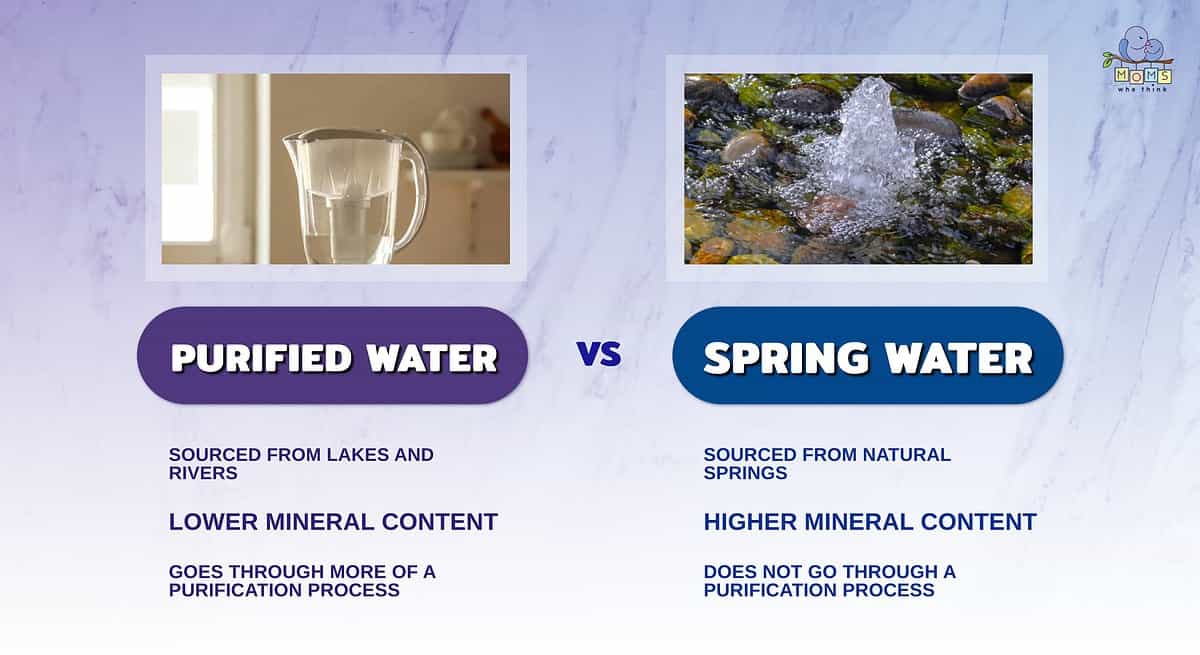
- Purified water is sourced from lakes and rivers, while spring water comes from natural springs.
- Since purified water goes through more processing, it has a lower mineral content compared to spring water.
- As the name suggests, purified water goes through an extensive purification process to make it safe to drink. Spring water doesn't go through the same type of process.
Finally, we know that our bodies need water daily, and we should drink at least 2 liters per day to help our organs function properly and stay hydrated. Both waters are healthy to drink, and each one comes from a different source with various treatment processes. Ultimately, the choice depends on your personal preference, whether you prefer purified vs. spring water. Remember to stay hydrated. We hope this article has helped you to understand purified vs. spring water: 4 differences & pros and cons for each. For a refreshing way to enjoy either purified water or spring water, try this fruit-infused water recipe.
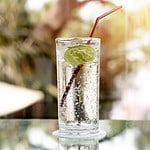
Fruit-infused water
Description
Fruit-infused water is a healthy and refreshing way to stay hydrated. This recipe infuses water with a combination of fresh fruits and herbs. Try different combinations to find your favorite blend.
Ingredients
Ingredients:
- 1–2 liters of cold water
- A variety of fresh fruits and herbs (choose based on your preferences and what's in season)
- Ice cubes (optional)
Fruit Ideas:
- Citrus fruits (e.g., lemons, limes, oranges, grapefruits)
- Berries (e.g., strawberries, blueberries, raspberries, blackberries)
- Cucumber slices
- Watermelon cubes
- Pineapple chunks
- Apple slices
- Kiwi slices
- Mango chunks
- Peach or nectarine slices
Herb Ideas:
- Mint leaves
- Basil leaves
- Rosemary sprigs
- Thyme sprigs
- Lavender buds
Instructions
- Wash and Prepare the Ingredients: Wash all the fruits and herbs thoroughly. If desired, peel citrus fruits or remove seeds from certain fruits.
- Slice or Chop: Slice, chop, or cut the fruits and herbs into small pieces to release their flavors more effectively.
- Combine in a Pitcher: Place your chosen combination of fruits and herbs in a large pitcher.
- Muddle (Optional): If you want to intensify the flavors quickly, you can gently muddle the ingredients in the pitcher using a muddler or the back of a spoon. This helps release the juices and essential oils.
- Add Water: Pour 1-2 liters of cold water into the pitcher, covering the fruits and herbs. You can also add ice cubes to make it even more refreshing.
- Let it Infuse: Allow the fruit-infused water to sit in the refrigerator for at least 1-2 hours, or overnight for even stronger flavors. The longer it sits, the more intense the flavors will become.
- Serve: Pour the fruit-infused water into glasses or bottles, ensuring that each serving includes some fruit and herbs. You can strain it if you prefer a clearer beverage.
- Enjoy: Sip and enjoy your homemade fruit water throughout the day. You can refill the pitcher with more water and reuse the same fruit and herbs for a second infusion.
Related Articles
- Club soda vs. sparkling water: How they are different and can they be substituted in cocktails
- Tonic water vs. club soda: 4 key differences
